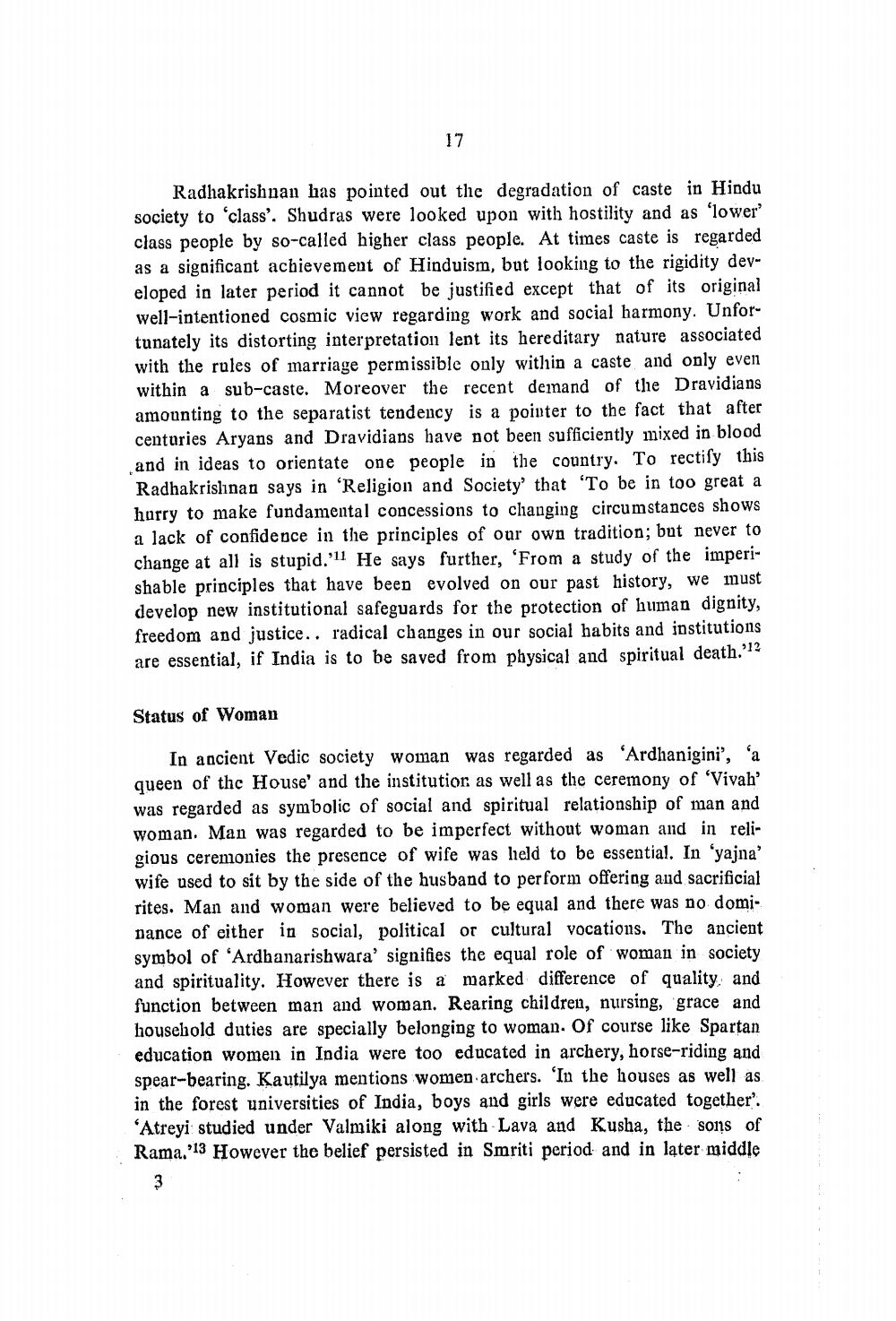________________
17
Radhakrishnan has pointed out the degradation of caste in Hindu society to 'class'. Shudras were looked upon with hostility and as 'lower class people by so-called higher class people. At times caste is regarded as a sigojficant achievement of Hinduism, but looking to the rigidity developed in later period it cannot be justified except that of its original well-intentioned cosmic view regarding work and social harmony. Unfortunately its distorting interpretation lent its hereditary nature associated with the rules of marriage permissible only within a caste and only even within a sub-caste. Moreover the recent deinand of the Dravidians amounting to the separatist tendency is a pointer to the fact that after centuries Aryans and Dravidians have not been sufficiently mixed in blood and in ideas to orientate one people in the country. To rectify this Radhakrislinan says in 'Religion and Society that "To be in too great a harry to make fundamental concessions to changing circumstances shows a lack of confidence in the principles of our own tradition; but never to change at all is stupid.'11 He says further, 'From a study of the imperishable principles that have been evolved on our past history, we must develop new institutional safeguards for the protection of human dignity, freedom and justice.. radical changes in our social habits and institutions are essential, if India is to be saved from physical and spiritual death.??
Status of Woman
In ancient Vedic society woman was regarded as 'Ardhanigini', 'a queen of the House' and the institutior as well as the ceremony of 'Vivah' was regarded as symbolic of social and spiritual relationship of man and woman. Man was regarded to be imperfect without woman and in religious ceremonies the presence of wife was held to be essential. In 'yajna' wife used to sit by the side of the husband to perform offering and sacrificial rites. Man and woman were believed to be equal and there was no dominance of either in social, political or cultural vocations. The ancient symbol of 'Ardhanarishwara' signifies the equal role of woman in society and spirituality. However there is a marked difference of quality, and function between man and woman. Rearing children, nursing, grace and household duties are specially belonging to woman. Of course like Spartan education women in India were too educated in archery, horse-riding and spear-bearing. Kautilya mentions women archers. 'In the houses as well as in the forest universities of India, boys and girls were educated together'. ‘Atreyi studied under Valmiki along with Lava and Kusha, the sons of Rama.'13 However the belief persisted in Smriti period and in later middle




